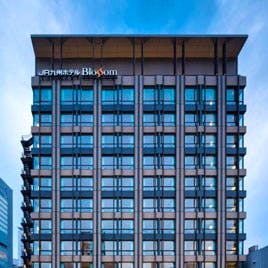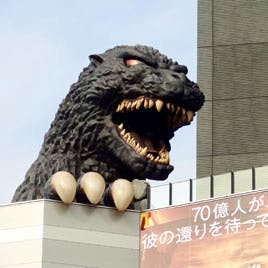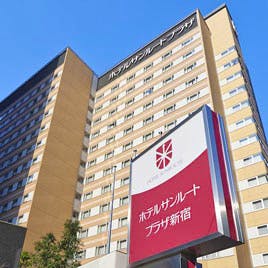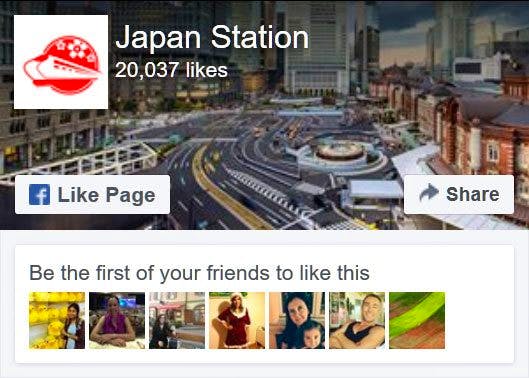Shinjuku Station is a major stop on East Japan Railway’s (JR East) Yamanote Line, the iconic green-striped loop line encircling central Tokyo. Named for Yamanote, the sometimes hilly western part of central Tokyo, the railway is one of the oldest in Japan. It forms a 34-kilometer-long chain of 29 stations including six major hubs; a 30th station is slated to open near Shinagawa in time for the 2020 Tokyo Olympics. Yamanote Line trains are frequent and reliable – there’s one every few minutes and they operate around the clock except for a three-hour period in the middle of the night.
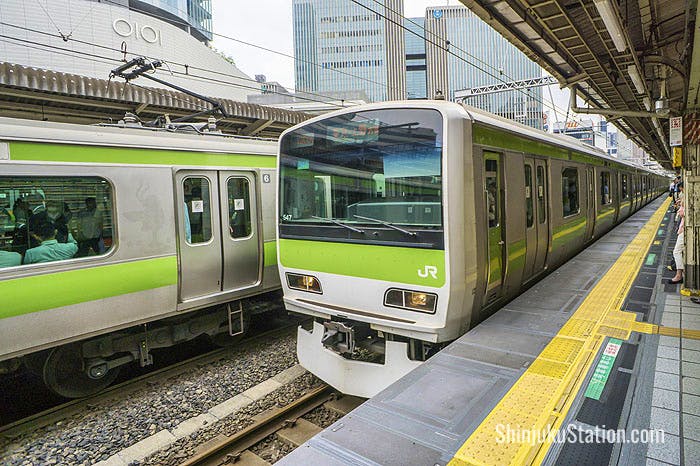
The Yamanote Line circles Tokyo almost around the clock
Entirely above ground, and sometimes on elevated tracks, the Yamanote Line is a great way to see and get around Tokyo. All trains stop at every station and a journey around the whole loop takes about an hour.
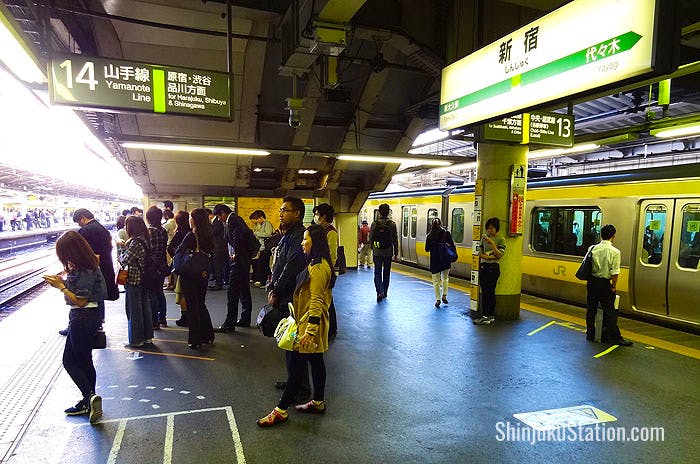
Platform 14 at Shinjuku Station – Yamanote Line for Shibuya and Shinagawa
At Shinjuku Station, the Yamanote Line is on platforms 14 and 15.
Trains on platform 14 are for Shibuya and Shinagawa.
Trains on platform 15 are for Ikebukuro and Ueno.
Yamanote Line Map
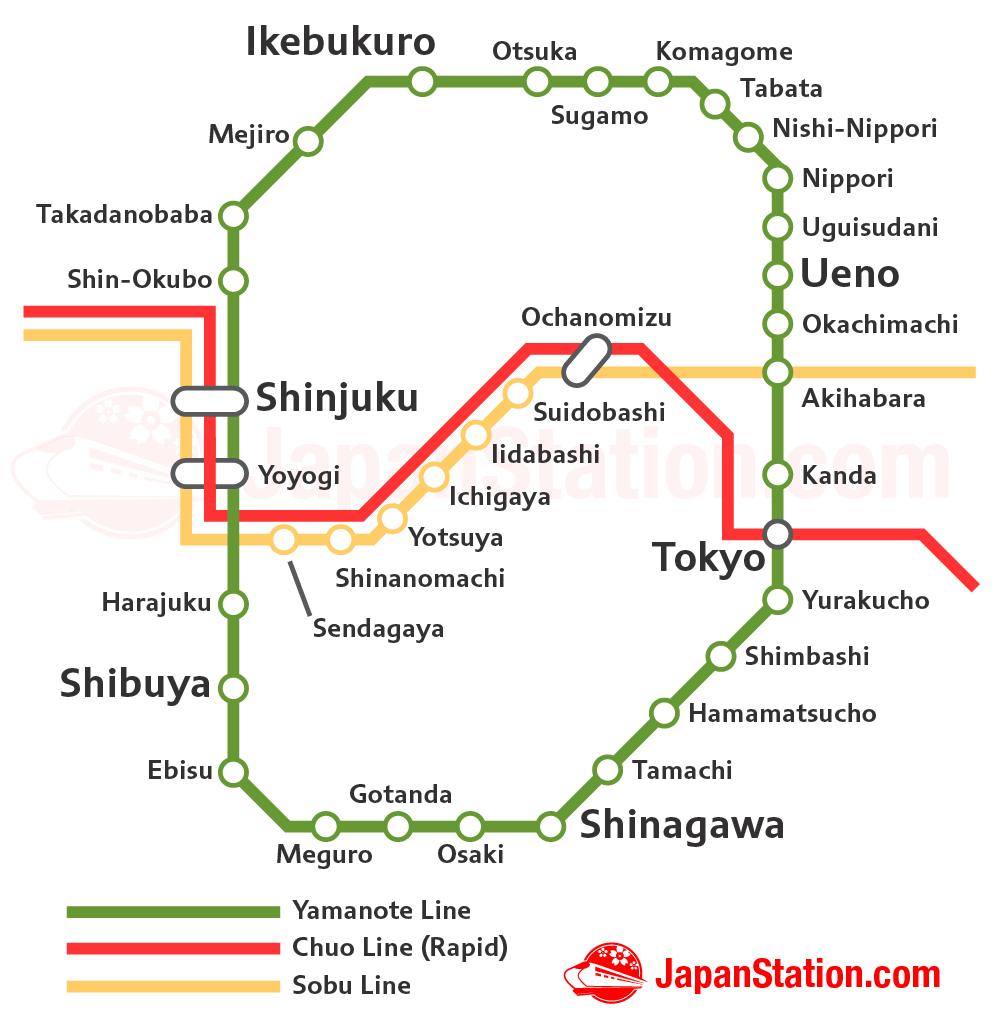
Popular Hotels near Shinjuku Station
Key Destinations
Harajuku Station
Exit at Harajuku Station, two stops south of Shinjuku, to see cosplaying teens, fashionistas trolling the luxury brand retailers along leafy Omotesando boulevard, the second-hand clothing shops crammed into Takeshita street and the green spaces of Yoyogi Park and Meiji Jingu Shrine. Maintaining its original Edwardian architecture, Harajuku Station marks its centenary in 2016.
Train fare: 140 yen
Train time: 5 minutes
Shibuya Station
To many visitors, the scramble intersection in front of Shibuya Station, with its waves of pedestrians, neon signs and giant video screens mounted on the surrounding buildings, is pure “Blade Runner.” Shibuya is packed with youth-focused fashion retailers like the Shibuya 109 department store as well as a myriad of live music venues, karaoke parlors, izakaya pubs and bars of every description. Look out for the statue of the famous loyal dog, Hachiko, in the square named after him.
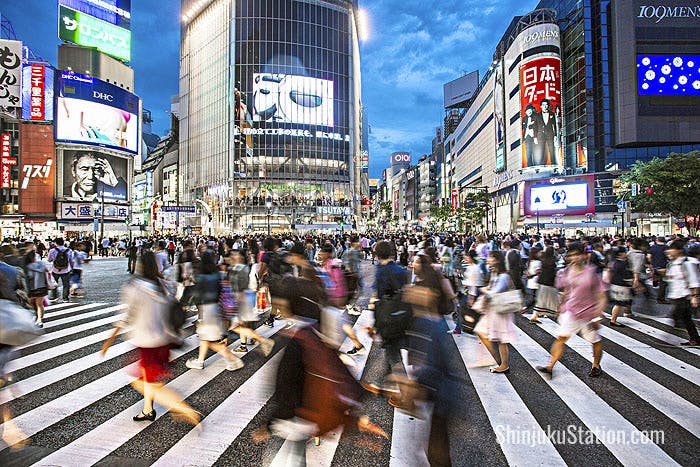
Shibuya is a mecca of youth culture and fashion in Tokyo
Shibuya Station is currently undergoing a major redevelopment plan that will add high-rise buildings to the station area over the next decade; the east side of the station is a massive construction zone.
Train fare: 160 yen
Train time: 7 minutes
Shinagawa Station
Shinagawa Station on the southern arc of the Yamanote Line has grown considerably since platforms for the Tokaido Shinkansen bullet train line were added in 2003. Now a major hub on the Yamanote, Shinagawa is also a stop for the Keikyu Main Line, which connects to Haneda Airport via the Keikyu Keikyu Airport Line. The Narita Express also stops here. The station and surrounding area is packed with malls, hotels and office towers.
Train fare: 200 yen
Train time: 19 minutes
Tokyo Station
Tokyo Station is the symbolic starting point for railways in Japan; the country’s first rail line, to Yokohama, was built not far away in 1872. Tokyo is the terminus for Japan’s most popular bullet train line, the Tokaido Shinkansen, and also has services for northbound Tohoku, Yamagata, Akita, Joetsu and Hokuriku Shinkansen lines. Visitors to Tokyo Disneyland can get to the theme park via the Keiyo Line’s underground platforms at Tokyo Station. The Narita Express also stops here. From Shinjuku Station, the JR Chuo Line, which cuts across the heart of the capital, can get you to Tokyo Station in only 14 minutes.
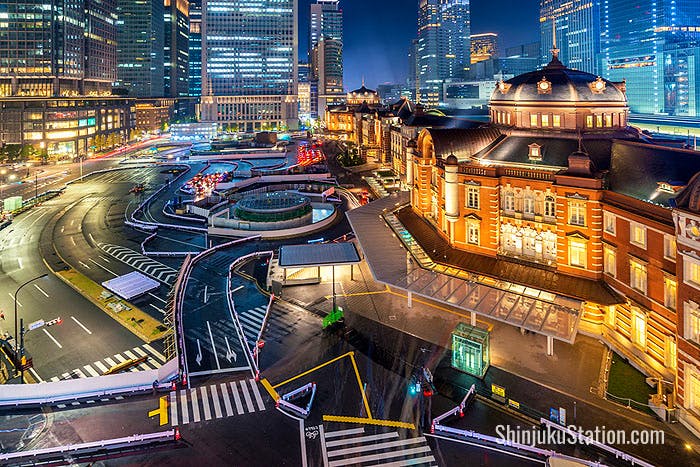
Tokyo Station has pride of place at the doorstep of Japan’s Imperial Palace
The recently renovated Marunouchi side of Tokyo Station, originally built in 1914, is a magnificent example of elegant Victorian red brick architecture and is the greatest legacy of architect Tatsuno Kingo. It faces the Imperial Palace and the Marunouchi business district, home to some of the most expensive real estate in the country.
The Tokyo Station Hotel is an iconic, luxurious establishment seamlessly integrated into the historic Tokyo Station building, offering convenient access to transportation and a blend of classic elegance with modern amenities.
Train fare: 200 yen
Train time: 30 minutes
Akihabara Station
The Akihabara electronics district grew out of black markets in the depressed years after Japan’s defeat in World War II. Major electronics retailers such as Yodobashi Camera have outlets here today, but the neighborhood is also home to individual vendors selling electronics components as well as otaku (geek) shops catering to manga, anime and video game fans. There’s also a thriving maid café industry here – look out for the street touts in French maid costumes.
Train fare: 170 yen
Train time: 29 minutes
Ueno Station
Ueno Station is unique in that it has a bit of everything for everyone – an important bullet train stop and link to Narita International Airport, a bustling shopping scene in the Ameyoko district, a major green space and cultural attractions.
Ueno is a stop for the Tohoku, Yamagata, Akita, Joetsu and Hokuriku Shinkansen lines and is also the main terminus of the 575 km-long Tohoku Main Line serving cities north of Tokyo. Keisei Skyliner express services for Narita International Airport depart via the adjacent Keisei Ueno Station.
Ueno Station is right by Ueno Park, home to some of Japan’s most famous museums, such as the Tokyo National Museum and the National Museum of Western Art, flowering cherry trees (sakura), as well as Ueno Zoo.
Train fare: 200 yen
Train time: 25 minutes
Ikebukuro Station
Ikebukuro is a major transport and shopping center in Toshima Ward on the northwest part of the Yamanote Line. One of the world’s busiest train stations, Ikebukuro and the surrounding area feature outlets such as the Tobu, Seibu and Marui department stores, Bic Camera and Yamada Denki electronics shops, the Sunshine City mall complex, Otome Road and Mandarake for manga and anime goods, and the Tokyo Metropolitan Art Space. Rail connections serve stations such as Kawagoe, Seibu-Chichibu and Wakoshi. The Narita Express also stops here.
Train fare: 160 yen
Train time: 9 minutes
Article by Tim Hornyak. All rights reserved.
